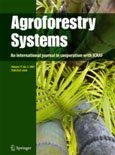Tree crown cover (CC) provides means for the continuous land cover characterization of complex tropical landscapes with multiple land uses and variable degrees of degradation. It is also a key parameter in the international forest definitions that are basis for monitoring global forest cover changes. Recently, airborne laser scanning (ALS) has emerged as a practical method for accurate CC mapping, but ALS derived CC estimates have rarely been assessed with field data in the tropics. Here, our objective was to compare the various field and ALS based CC estimates across multiple land cover types in the Taita Hills, Kenya. The field data was measured from a total of 178 sample plots (0.1 ha) in 2013 and 2014. The most accurate field measurement method, line intersect sampling using Cajanus tube, was used in 37 plots. Other methods included CC estimate based on the tree inventory data (144 plots), crown relascope (43 plots) and hemispherical photography (30 plots). Three ALS data sets, including two scanners and flying heights, were acquired concurrently with the field data collection. According to the results, the first echo cover index (FCI) from ALS data had good agreement with the most accurate field based CC estimates (RMSD 7.1% and 2.7% depending on the area and scan). The agreement with other field based methods was considerably worse. Furthermore, we observed that ALS cover indices were robust between the different scans in the overlapping area. In conclusion, our results suggest that ALS provides a reliable method for continuous CC mapping across tropical land cover types although dense shrub layer and tree-like herbaceous plants can cause overestimation of CC.
DOI:
https://doi.org/10.5194/isprsarchives-XL-7-W3-409-2015
Altmetric score:
Dimensions Citation Count:
























